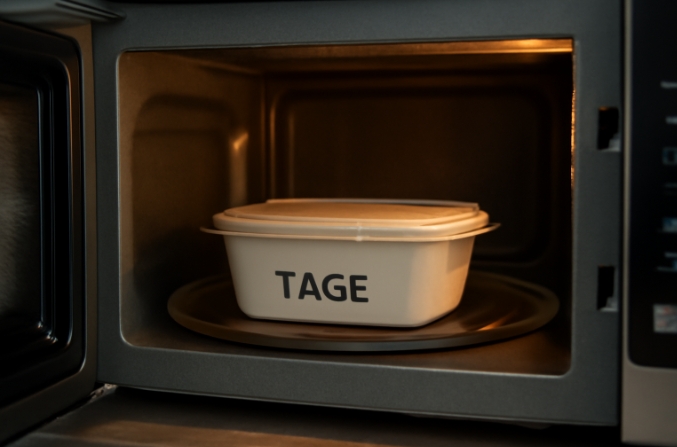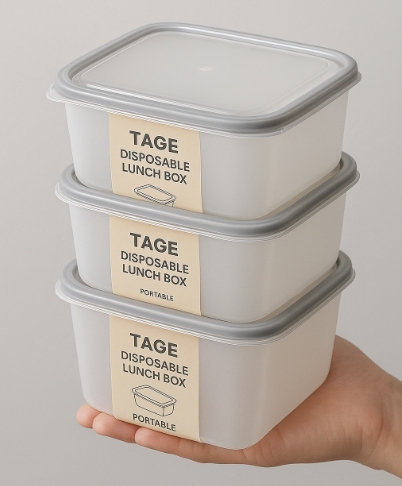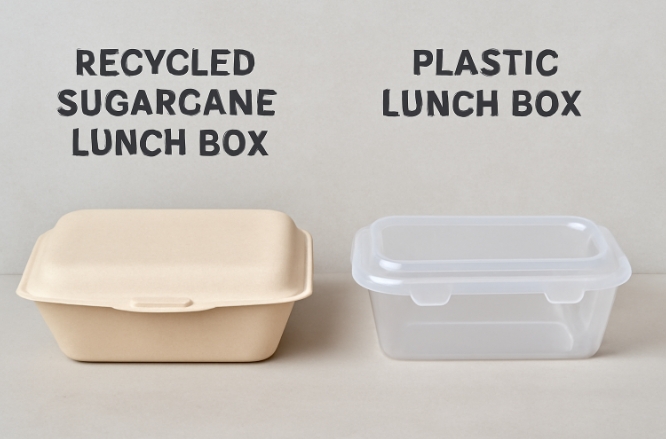
Content Menu
● Understanding Disposable Plastic Lunch Boxes
>> What Are Microwave Disposable Plastic Lunch Boxes?
>> Common Types of Plastics Used
● The Science of Microwaving Plastics
>> How Microwaves Heat Food
>> What Happens to Plastics in the Microwave?
● Safety Considerations for Microwave Disposable Plastic Lunch Boxes
>> How to Identify Microwave-Safe Plastic Lunch Boxes
>> Risks of Using Non-Microwave-Safe Plastics
>> Proper Usage Tips
● Health Implications of Microwaving Plastics
>> Chemical Leaching and Health Risks
>> Regulatory Oversight
>> Best Practices to Minimize Risk
● Environmental Considerations
>> Disposable vs. Reusable Lunch Boxes
>> Biodegradable Alternatives
● Practical Guidelines for Safe Reheating
>> Step-by-Step Guide
>> When to Avoid Using a Microwave Disposable Plastic Lunch Box
● Alternatives to Microwave Disposable Plastic Lunch Boxes
>> Glass Containers
>> Ceramic Containers
>> High-Quality Reusable Plastics
● Common Myths About Microwaving Plastics
>> Myth 1: All Plastics Are Unsafe in the Microwave
>> Myth 2: Microwaving Plastics Causes Cancer
>> Myth 3: If It Doesn't Melt, It's Safe
● Conclusion
● Frequently Asked Questions (FAQ)
>> 1. Can I microwave any disposable plastic lunch box?
>> 2. How can I tell if my lunch box is microwave-safe?
>> 3. What happens if I microwave a non-microwave-safe plastic lunch box?
>> 4. Are microwave disposable plastic lunch boxes reusable?
>> 5. What are safer alternatives to microwave disposable plastic lunch boxes?
In today's fast-paced world, convenience is king. Many people find themselves relying on takeout, meal prepping, and quick lunches at the office or school. The microwave disposable plastic lunch box has become a staple for storing and reheating food. However, a common question arises: Can I reheat food in a disposable plastic lunch box without risking my health or the quality of my meal? This comprehensive article explores the science, safety, and best practices for using a microwave disposable plastic lunch box, empowering you to make smart choices for your meals and well-being.

Understanding Disposable Plastic Lunch Boxes
What Are Microwave Disposable Plastic Lunch Boxes?
A microwave disposable plastic lunch box is a single-use food container made from various types of plastics. These boxes are designed primarily for convenience, allowing users to store, transport, and sometimes reheat food. They are popular in restaurants, cafeterias, and homes due to their lightweight nature, low cost, and ease of disposal.
Common Types of Plastics Used
Not all plastics are created equal, especially when it comes to heat resistance. The most common plastics used in disposable lunch boxes include:
- Polypropylene (PP): This plastic is known for its high heat resistance and is frequently used in containers labeled as microwave-safe.
- Polyethylene Terephthalate (PET): Often used for cold food storage, PET is only safe for microwaving if specifically labeled as microwave-safe.
- Polystyrene (PS): Commonly recognized as Styrofoam, this material is not safe for microwave use and can release harmful chemicals when heated.
The Science of Microwaving Plastics
How Microwaves Heat Food
Microwave ovens heat food by emitting electromagnetic waves that cause water molecules in the food to vibrate rapidly, generating heat. This process also heats the container, especially if it is not designed to withstand high temperatures.
What Happens to Plastics in the Microwave?
When plastics are exposed to microwave heat, their chemical structure can break down if the material is not sufficiently heat-resistant. This breakdown can cause chemicals such as phthalates and bisphenol A (BPA) to leach into the food, potentially posing health risks.
Safety Considerations for Microwave Disposable Plastic Lunch Boxes
How to Identify Microwave-Safe Plastic Lunch Boxes
The safest way to determine if a microwave disposable plastic lunch box is suitable for reheating is to check for:
- A microwave-safe label or symbol: Usually depicted as wavy lines on the bottom of the container.
- Material type: Containers made from polypropylene (PP) or CPET are generally safe for microwave use.
- BPA-free and food-grade certifications: These indicate the plastic has passed safety standards for food contact and heat resistance.
If a container lacks these indicators, it is best not to use it in the microwave.
Risks of Using Non-Microwave-Safe Plastics
Heating food in containers not designed for microwave use can result in:
- Melting or warping of the plastic
- Release of harmful chemicals into food
- Potential contamination and health risks
Polystyrene (Styrofoam) and plastics with no recycling code or microwave symbol should never be microwaved.
Proper Usage Tips
- Always follow manufacturer instructions.
- Avoid using containers that are cracked, discolored, or have a strange odor.
- Do not microwave plastics for longer than recommended.
- Leave the lid slightly open or use the vent if available to prevent pressure buildup.

Health Implications of Microwaving Plastics
Chemical Leaching and Health Risks
The primary concern with microwaving disposable plastic lunch boxes is the potential leaching of chemicals like BPA and phthalates. These substances have been linked to hormone disruption and other health concerns, especially when plastics are heated beyond their tolerance.
Regulatory Oversight
In many countries, plastics intended for food contact, including those labeled as microwave-safe, must meet stringent safety standards set by regulatory agencies. Only containers that pass these tests are approved for microwave use.
Best Practices to Minimize Risk
- Use only containers labeled as microwave-safe.
- Replace old or damaged containers promptly.
- Avoid microwaving fatty or oily foods in plastic, as these can reach higher temperatures and increase the risk of chemical leaching.
Environmental Considerations
Disposable vs. Reusable Lunch Boxes
While microwave disposable plastic lunch boxes offer convenience, their single-use nature contributes to plastic waste. Consider switching to reusable options made from glass, ceramic, or high-quality microwave-safe plastics to reduce environmental impact.
Biodegradable Alternatives
Some companies now offer biodegradable or compostable lunch boxes. However, unless these are specifically labeled as microwave-safe, they may not withstand microwave heating and could pose safety risks.
Practical Guidelines for Safe Reheating
Step-by-Step Guide
1. Check the Label: Ensure the lunch box is marked as microwave-safe.
2. Inspect the Condition: Do not use if the container is damaged or discolored.
3. Open the Lid: Vent the container to prevent pressure buildup.
4. Use Medium Power: Avoid overheating by using medium or low microwave settings.
5. Limit Heating Time: Do not exceed the recommended heating time, typically a few minutes for most microwave disposable plastic lunch boxes.
6. Stir Food: For even heating, stir the food halfway through the process.
7. Let Stand: Allow food to sit for a minute after microwaving to let heat distribute evenly.
When to Avoid Using a Microwave Disposable Plastic Lunch Box
- The container is not labeled as microwave-safe.
- The plastic is thin, flimsy, or has no recycling code.
- The lunch box is made from polystyrene or foam.
- The container shows signs of wear, such as cracks or cloudiness.
Alternatives to Microwave Disposable Plastic Lunch Boxes
Glass Containers
Glass is non-reactive, highly durable, and suitable for both storage and reheating. Always ensure the glass is labeled as microwave-safe.
Ceramic Containers
Ceramic lunch boxes are also a safe and reusable option for microwaving. Like glass, check for microwave-safe labeling.
High-Quality Reusable Plastics
Some reusable plastic containers are designed for repeated microwave use and are made from high-grade, BPA-free materials.
Common Myths About Microwaving Plastics
Myth 1: All Plastics Are Unsafe in the Microwave
Not all plastics are dangerous. Only those not designed for microwave use pose a risk. Microwave disposable plastic lunch boxes labeled as microwave-safe are tested for safety.
Myth 2: Microwaving Plastics Causes Cancer
There is no direct evidence that microwaving food in microwave-safe plastic containers causes cancer. The risk arises only if harmful chemicals leach into food from unsafe plastics.
Myth 3: If It Doesn't Melt, It's Safe
A container might not melt but can still release harmful chemicals if it isn't designed for microwave heating.
Conclusion
Reheating food in a microwave disposable plastic lunch box can be safe-if and only if the container is clearly labeled as microwave-safe and made from heat-resistant, food-grade materials. Always inspect your containers, follow manufacturer instructions, and avoid using damaged or unlabeled plastics. For those seeking a more sustainable and health-conscious approach, consider investing in reusable glass or ceramic containers. By following these guidelines, you can enjoy the convenience of microwaving your meals without compromising your health or the environment.

Frequently Asked Questions (FAQ)
1. Can I microwave any disposable plastic lunch box?
No, only microwave disposable plastic lunch boxes labeled as microwave-safe should be used in the microwave. Look for a microwave symbol or specific instructions from the manufacturer. Using containers without this labeling can result in melting, warping, or the release of harmful chemicals.
2. How can I tell if my lunch box is microwave-safe?
Check the bottom of the lunch box for a microwave-safe symbol (usually wavy lines) or specific wording. Also, look for the type of plastic-polypropylene (PP) is generally safe for microwave use. If there is no marking, do not use it in the microwave.
3. What happens if I microwave a non-microwave-safe plastic lunch box?
Microwaving a non-microwave-safe plastic lunch box can cause the container to melt or warp, and may release harmful chemicals into your food. This can pose health risks and ruin your meal.
4. Are microwave disposable plastic lunch boxes reusable?
Most microwave disposable plastic lunch boxes are designed for single use. Repeated heating and washing can degrade the plastic, increasing the risk of chemical leaching and container failure. For repeated use, choose containers specifically labeled as reusable and microwave-safe.
5. What are safer alternatives to microwave disposable plastic lunch boxes?
Safer alternatives include glass or ceramic containers labeled as microwave-safe, and high-quality reusable plastic containers made from BPA-free materials. These options are more durable and environmentally friendly.

















